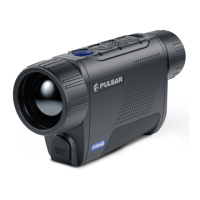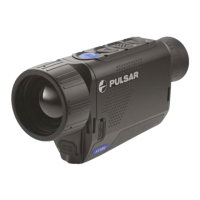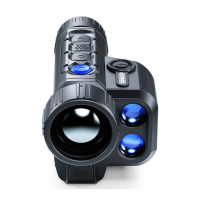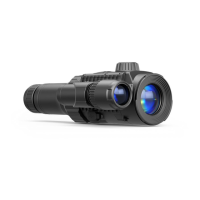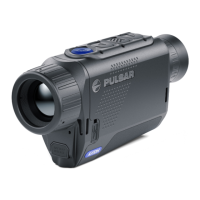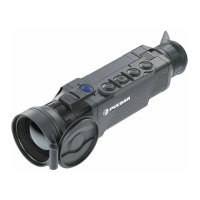14
15
PROBLEM
POSSIBLE CAUSE CORRECTIVE ACTION
The unit will
not turn on.
The image is blurry, with
vertical stripes and uneven
background.
The image is too dark.
Batteries have been
wrongly installed.
Oxidized contact points in
the battery compartment
due to “leaky” batteries or
contact points becoming
exposed to a chemically
reactive solution.
One or several batteries
are fully exhausted or
defective.
Calibration is to be done.
Brightness or contrast level
is too low.
Reinstall the batteries
observing polarity.
Clean the battery
compartment, focusing on
the contacts.
Install fresh batteries.
Do the calibration
according to section 8
“OPERATION”.
Adjust brightness/contrast
by rotating the controller.
The unit does not operate
on external power supply.
Charge the power supply
(if required).
Poor image quality /
Detection range decreases.
Problems described may arise in inclement weather
conditions (snow, rain, fog etc.).
Make sure your power
supply provides output
voltage.
Click on the link to read frequently questions on thermal vision
http://www.pulsar-nv.com/support/faq/
No image when recording
video signal from the
thermal imager using an
external video recorder.
Video output of the thermal
imager is disabled.
No connection.
Activate the video output
(see point “Selection/
Disable of video output
signal”, chapter MENU).
Make sure the video cable is
securely connected.
When using the scope at
negative temperatures
image quality is worse than
at positive temperatures.
Due to various thermal conductivity, objects (surrounding
environment, background) under observation get warm faster
at positive temperatures, which allows higher temperature
contrast and, thus, quality of the image produced by a thermal
imager, will be better.
At low operating temperatures objects under observation
(background) normally cool down to roughly equal
temperatures which leads to lower temperature contrast, and
to image quality (precision) degradation. This is normal for
thermal imaging devices.
